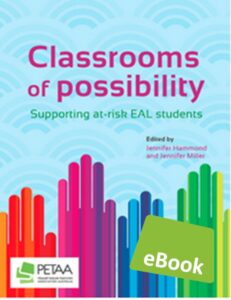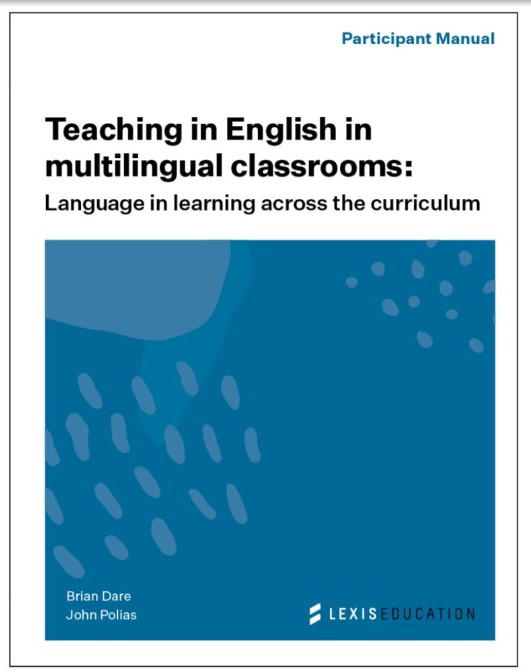
Founder of ESL Reads
EAL Teacher and Curriculum Writer (Secondary)
Recent Posts
3 Ways to Build Respectful Relationships with Your Pre-Beginner EAL Students
5 Inspirational Stories for your EAL Classroom in 2023!
Strategies to Help EAL Students Navigate Our Education Systems
Advocating for the Needs of Your EAL Students
Why It’s Important to Understand Your EAL Students’ Education Journeys
6 Ways to Support EAL/D Learners in the Classroom
April 18, 2023 by Lauren Piovesan and Lynette Lingard
If you are new to teaching EAL, or you are a mainstream teacher who has EAL/D students in your class, this is the blog for you! This week, I had the privilege of sitting down with Lynette Lingard, a highly experienced EAL/D and Literacy specialist and consultant who has worked in the EAL/D field for 26 years. In our conversation, Lynette took the bread and butter of EAL teaching and condensed it into 6 easy to use methods that can benefit ALL students. So, without further ado, I present to you 6 ways that you can support not only your EAL students, but all of the students in your class.
1 - Visuals

“Use these as much as you can!” advises Lynette. In this case, that old saying, “A picture is worth a thousand words,” is especially true for our EAL/D students who may not have a thousand English words yet! This also supports a multi-modal approach, which we know aids comprehension and memory for all students in the classroom.
2 - Oral and Hands-On Activities

“Students learn by talking and doing.” Providing multiple opportunities for students to participate in purposeful talk, where the instruction and desired output is clear, is instrumental in developing your students’ English language skills. A simple yet effective way to make learning more hands-on is by using cards with sentences, clauses or words and having students manipulate them to construct a text. When I was a teacher, this was my go-to for teaching both sentence structure and text structure. Students would physically manipulate words in a sentence, sentences in a paragraph and paragraphs in a text. Pairing students up in hands on activities like these will see both their oral language and teamwork skills take off!
3 - Scaffolding

Scaffolding is a term that has been thrown around a lot lately in discussions about teaching, perhaps so much so that it’s true meaning can get lost in its overuse. Lynette provides a brilliant definition, “Scaffolding is the guidance and intervention provided by a teacher to move the student beyond what he or she can currently do independently,” (Polias and Dare, 2020). In our discussion, Lynette also provided a fantastic framework for looking at how we can scaffold on three levels:
- Macro-scaffolding – This happens at the unit planning level. It is the careful sequencing of activities that you will use to build a student’s understanding from the beginning of a unit to the completion of a final assessment task.
- Meso-scaffolding – This is when the teacher plans and sequences the activities in a lesson to move students in small steps from prior knowledge to new knowledge. This would include the consideration of supports such as graphic organisers, and pair and group activities.
- Micro-scaffolding – This is the “on-the-spot” scaffolding where you might prompt students using questioning techniques, or focus on sections of a task.
Careful consideration about how you are scaffolding the learning on these three levels is key to your students’ ability to access the curriculum and participate in the activities.
4 - Modelling and Deconstructing Texts

Usually when students get older and progress through schooling, the focus of modelling and deconstruction is placed on the structure of a text or its genre. There is less emphasis placed on the language and grammatical features of the texts that students are asked to comprehend and produce. Without the explicit teaching of language features and grammatical structures, it can make it very difficult for all students to know how to produce what is required of them. Explicitly teach the grammar and key language features, and as Lynette puts it, “Every student will rise…as they access more content and learn how to write about it!”
5 - Joint Construction of Texts

Whether students participate in joint construction activities as a whole class, in a small group, or with a partner, they are being supported to practise writing. Joint construction can be done at the sentence, paragraph or whole text level. If it is done as a whole class, the teacher can guide the students’ word choice and grammar as they construct a text together. In the classroom, we can tie this in with modelling and deconstruction by presenting jointly constructed texts on the wall with annotations for students to refer back to. This can provide some of the scaffolding that students need to write with more confidence and independence.
6 - Recycling Texts and Language

If you are going to teach a new language structure, use a known and familiar text. Similarly, if you are going to teach new content, use known and familiar language structures. It is important to consider this when selecting texts because if you are trying to teach both new content and new language structures, this can lead to cognitive overload!
Now I can hear you saying, “That’s all well and good but what does all of that look like and how do I do it?” These broad strategies are designed as a guide and may require further learning and research to implement them confidently in your classroom. Below, Lynette has recommended a comprehensive course that covers these strategies and more! If this is not a possibility at this time, she has recommended some key texts that you can use to learn more. Some of these are written with younger students in mind, but the strategies can easily be modified for older students.
Course Information
Teaching in English in Multilingual Classrooms (TEMC) is a course by Lexis Education which covers all of these approaches to teaching and more!
Key Reference Books
- Learning to Learn in a Second Language by Pauline Gibbons
- Teaching English Language Learners in Mainstream Classrooms by Margery Hertzberg.
- Classrooms of Possibility: Supporting At-Risk EAL Students by Jennifer Hammond and Jenny Miller
- Designing Learning for Diverse Classrooms by Paul Dufficy
- Scaffolding Language, Scaffolding Learning by Pauline Gibbons
- An EAL/D Handbook by Helen Harper and Susan Feez,
- Teaching ESL through Science by John Polias.
- A New Grammar Companion for Teachers by Beverly Derewianka


If you are new to teaching EAL/D students and you feel imposter syndrome creeping in whenever EAL/D pedagogy or strategies are mentioned, know that we have all been there! I distinctly remember the beginning of my final placements, when my supervisor suddenly realised that the TESOL program at my university had taught me very little! She gave me the “Classrooms of Possibility” book as a starting point, and my knowledge grew from there. It takes time, and it’s impossible to expect yourself to master it overnight. However, by using Lynette’s six ways to support EAL/D learners, there are little adjustments you can make to your teaching today that will make an enormous difference for your EAL/D students. As Lynette puts it, “They deserve our time and attention.”
Lynette Lingard is an EAL/D and literacy specialist who has 26 years of experience working in the field of EAL/D in Queensland. She is incredibly passionate about supporting schools and teachers to understand and cater to the needs of their EAL/D students, while also implementing strategies which help all students. Throughout her career, Lynette has worked as a classroom teacher, EAL/D specialist, EAL/D Principal Advisor, and consultant. She is currently a consultant for her own business called Focus Literacy and for Lexis Education.

Lynette will be presenting face to face TEMC Tutor Training in Brisbane! The training will be held in the Brisbane CBD in June 2023. For more information, see www.lexised.com.

Please note: The reference book recommendations made in this blog are based on Lynette’s and Lauren’s own research, recommendations or classroom experience, and is not endorsed by the authors, illustrators or companies that feature here.

I very delighted to find this internet site on bing, just what I was searching for as well saved to fav
Thank you Giada, I am glad you have found our website useful.